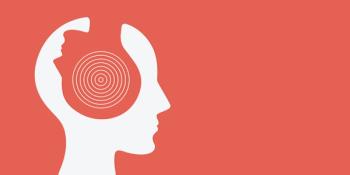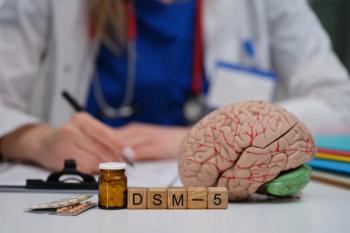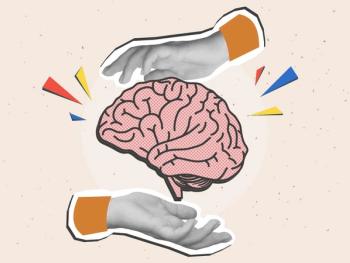
- Vol 37, Issue 4
- Volume 37
- Issue 4
The Art of Self-Disclosure
Neighborhoods, tribes, gangs-each have their own culture. Unless you have been raised in one of them and are "known," you come as a stranger.
PORTRAIT OF A PSYCHIATRIST
– Series Editor, H. Steven Moffic, MD
The question of whether to self-disclose in my work as a community psychiatrist is a non-issue-it must be done. No matter how well-intentioned and well-trained you are, the community wants to know about what makes you “real.” If you want to hear their stories, you have to tell yours.
Neighborhoods, tribes, gangs-each have their own culture. Unless you have been raised in one of them and are “known,” you come as a stranger. Your credentials may get you in the door. Gaining access to the heart and soul of a community-where the real healing takes place-you must be willing to reach inside and share something about your authentic self.
I joined the
Early on in my work with Native American patients, a woman sat down in my office and looked around at my diplomas on the wall. “You know, all those degrees don't mean you have a higher education. Look up at the ceiling. There’s nothing hanging up there which doesn't mean there isn’t anything to be learned by looking up.” In other words, she wanted to know whether I belonged to a tribe, prayed in my native language, and knew the songs of my father.
During morning rounds at the Santa Fe Indian Hospital, an elderly man had been admitted the night before in acute congestive heart failure. I would be his doctor because I provided the aftercare to his village. “Santiago” wore a headband and turquoise earrings, his long hair tied in a traditional chignon. He asked, “You're going to be my doctor?” I nodded, and then he asked, “Where did you learn how to heal?” I thought he was asking for my credentials, and I recited this litany of academic achievements. When I finished, he asked, “Do you know how to dance?” I looked at him incredulously and repeated the question, “Do I know how to dance? He said, “Yes, if you want to heal you have to be able to dance.”
I didn't want to be caught short and said yes, I knew how to dance, and he motioned for me to show him. I did a little two-step shuffle at the bedside and he approved. Then then I asked him if he knew how to dance (at the time I did not know he was a traditional medicine man). He got out of bed slowly and did some corn-dance steps at the bedside. I applauded him and I asked him if he would teach me how to dance that way. He said, “I can teach you my steps, but you have to be able to hear your own music." In Indian Country, the music expressed what it meant to be healthy.
The Navajo word for health is Hozho, the same word for truth, beauty, balance, harmony, and the Great Spirit. Your health is measured by what you say with your lips, reveal by your actions, and feel in your heart. All tell the same story. If you keep saying things you don't mean and doing things you don’t believe in, you will get sick. This ancient wisdom of mind/body/spirit in balance as a prerequisite for health is now spoken in the language of the science of
A good doctor versus a great doctor
Alas, psychiatry training from early on focuses on not getting too personal because it is believed that self-disclosure impairs clinical judgement and can lead to misdiagnosis and mistreatment. I believe that maintaining a posture of dispassionate clinical objectivity, not connecting with people at a heartfelt level, can do the same.
Being “real” actually magnifies one’s therapeutic efficacy. Self-disclosure humanizes us, and that soulful connection is where the real healing takes place; it will also move you from being a doctor to becoming a healer.
A good doctor can make adiagnosis and prescribe the appropriate treatment; a great doctor can make the diagnosis, prescribe the treatment, and add a preventative module by teaching the patient/community how to minimize their exposure to the pathogen and take better care of themselves. A healer can do all that and is in addition an active participant in the entire process. A healer does not watch from the sidelines but is totally engaged in every aspect of the healing journey.
Now in my 80s, I still work and engage (albeit more slowly) with people in body, mind, and spirit. I disclose and make relationships at the heartfelt level, which allows me to tell a healing story using symbols and metaphors my patients understand. I light candles; induce trance; recite poetry; sing; prescribe rituals, and create healing ceremonies. My experience has taught me to trust my intuition in what I choose to disclose in sharing my truth-and it often inspires people to imagine that they can see their old landscape with new eyes.
This article was originally posted on January 2, 2020, and has since been updated. -Ed
Disclosures:
Dr Hammerschlag is a practicing psychiatrist in Phoenix, AZ. Further examples of Dr Hammerschlag’s self-disclosures can be found in his blog site, Schlagbytes, located at
Articles in this issue
over 5 years ago
The Name “Schizophrenia” Is Heard Worldwideover 5 years ago
Big Brother FDA Is Watching, Helpingover 5 years ago
Drug Receptor Profiles Matterover 5 years ago
Let’s Talk About Resilienceover 5 years ago
The Other #MeToo: Male Sexual Abuse Survivorsover 5 years ago
25 Years After the Oklahoma City Bombingover 5 years ago
Resilience, Not Panic, in a Time of PandemicNewsletter
Receive trusted psychiatric news, expert analysis, and clinical insights — subscribe today to support your practice and your patients.

















